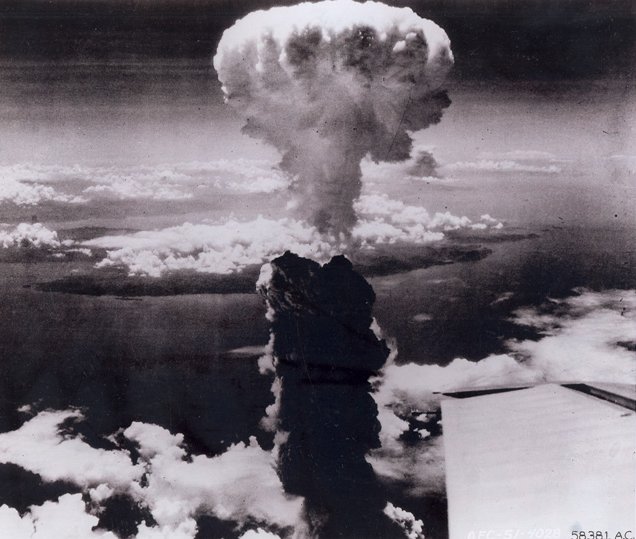
By the time the Second World War began in 1939, most of the leading nuclear scientists of the world were well aware that an atomic bomb was a possibility, but that to manufacture such a device would require a great deal more research and the assistance of many branches of engineering. In the United States, Einstein, Fermi and their colleagues advised President Roosevelt to start production of an atom bomb immediately. On 2nd December I942 an American research team headed by Enrico Fermi demonstrated the first controlled release of atomic energy at the University of Chicago.
Meanwhile at Oak Ridge, Tennessee, engineers began the construction of a huge factory to obtain relatively large amounts of the element Uranium 235, and six years after Einstein had first spoken with President Roosevelt the first atom bomb was ready for test.

On 16th July 1945 at a secret testing ground near Alamagordo in New Mexico, the bomb was exploded and produced a ‘huge multi-coloured surging cloud’. It was estimated that the temperature at the center of the explosion reached about 10 million degrees C. and that it was equivalent to a 20 kiloton bomb, that is, about the same as exploding 20,000 tonnes of ordinary chemical explosive.

Only three weeks after the first test in Mexico a bomb was dropped on Hiroshima in Japan; and three days later a second bomb was dropped on Nagasaki. The results were horrifying but brought the Second World War to an immediate end.
LINKS TO IMAGES:
https://nsarchive.gwu.edu/nukevault/ebb525-The-Atomic-Bomb-and-the-End-of-World-War-II/
http://www.english.illinois.edu/maps/poets/g_l/levine/bombing.htm